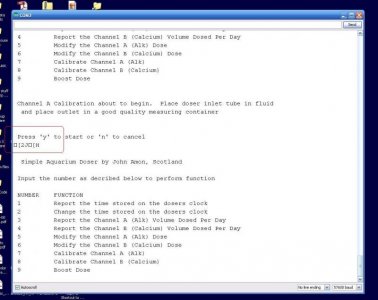johnamon
New member
zachts,
I've had a couple of thoughts please note :-
The safe bet is to work your way through the menus and set every single option explicitly
I've had a couple of thoughts please note :-
- that the atmega chips' eeprom values default to 254 if they've never been written to. Therefore boost dose could dose litres and litres unless you set it to 0 manually before you plug it in to your pumps.
- When fresh from the factory your real time clock might not tick over unless you run the appropriate example code from the RTC library first - but then it might tick over just fine. Check the clock is running by querying it a few times at first.
The safe bet is to work your way through the menus and set every single option explicitly

